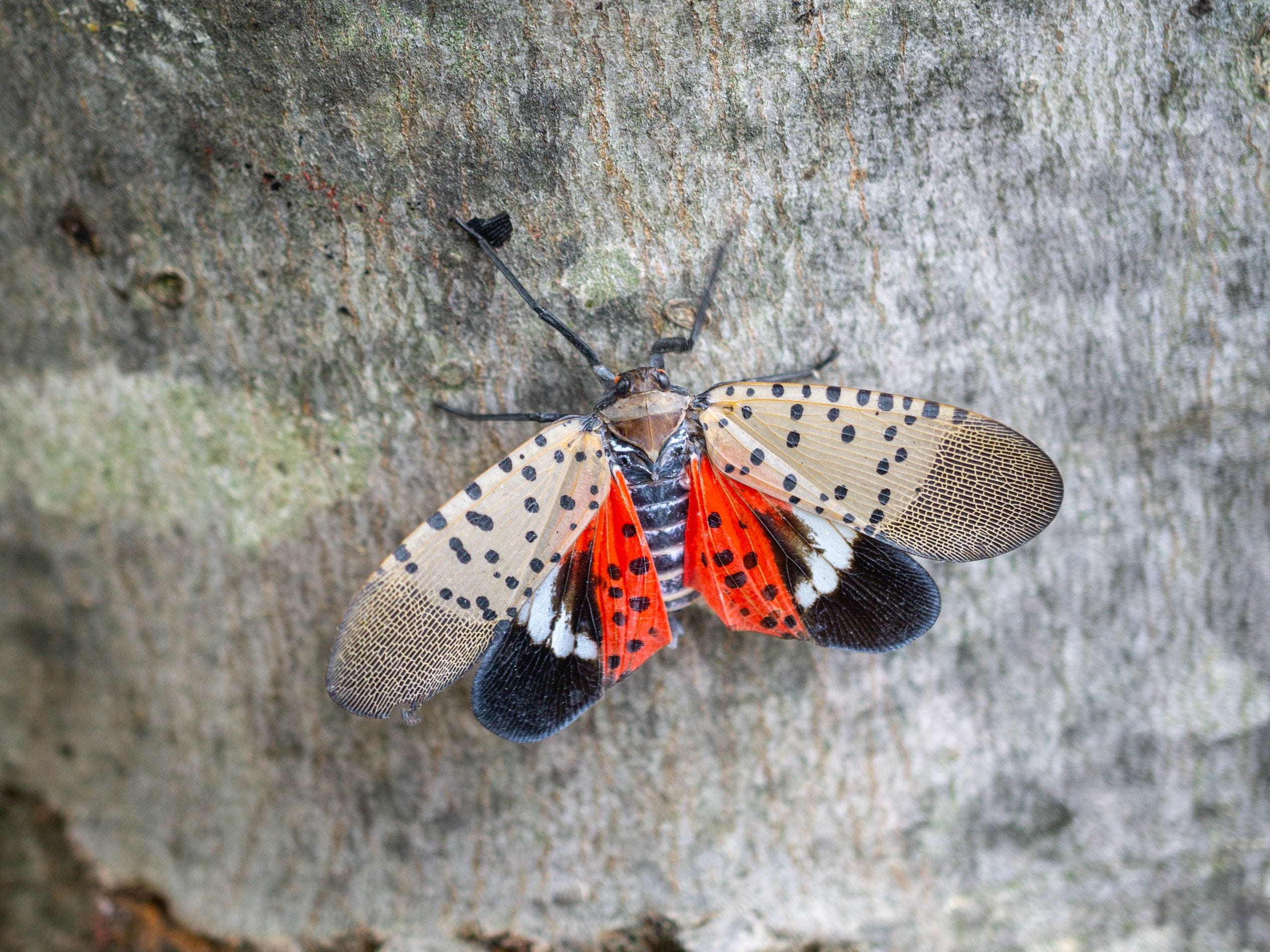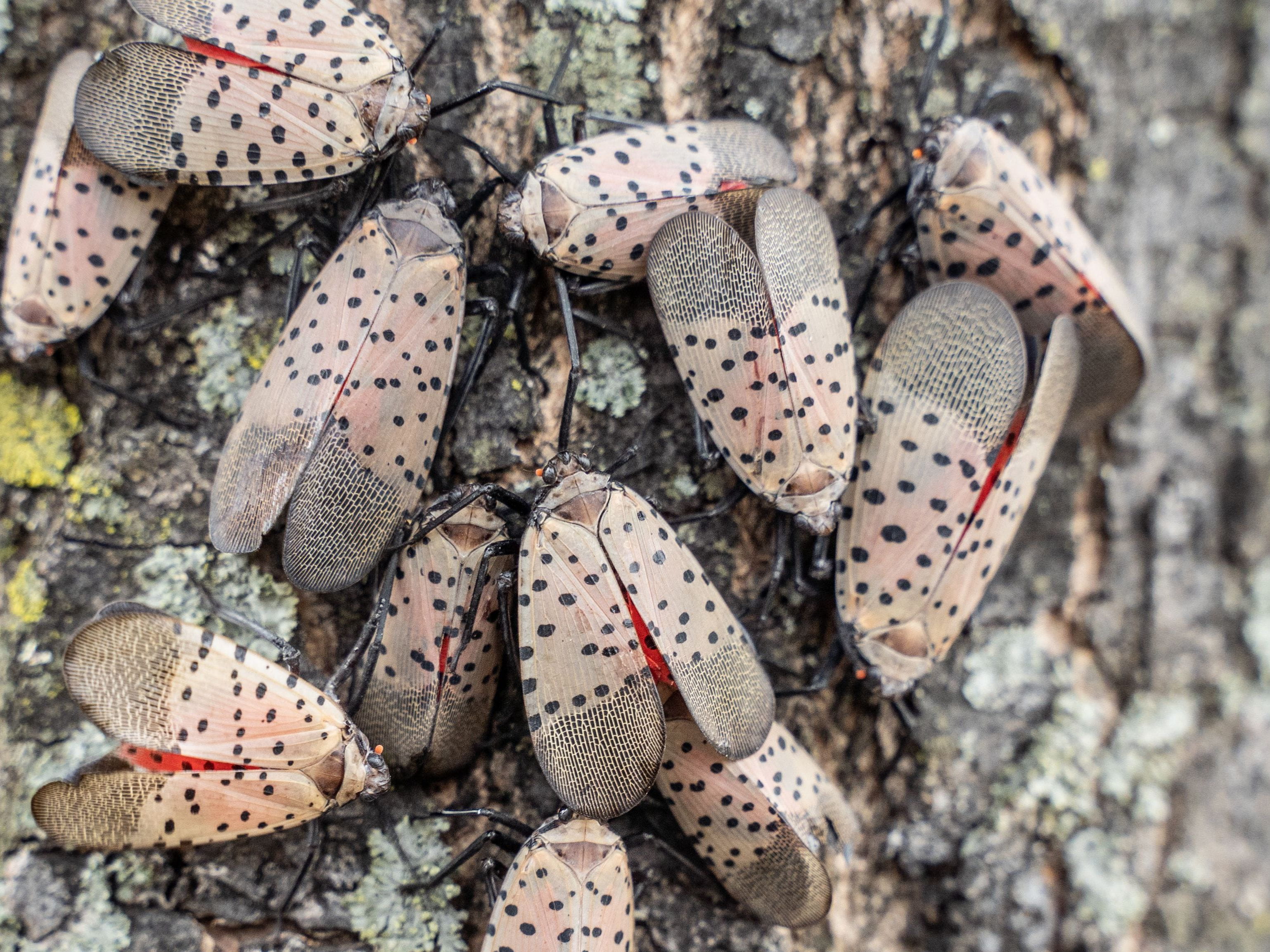Shining a light on spotted lanternflies

The Bottom Line
The spotted lanternfly is an insect species native to parts of China and Vietnam. The insect itself does not bite or sting. It is not known to be toxic to humans but could cause upset stomach if ingested. Potential side effects of ingesting small amounts of spotted lanternflies are nausea, vomiting, constipation, abdominal pain, and loss of appetite. These symptoms are self-limited and do not typically require treatment.

What are spotted lanternflies? Where are they commonly found?
The spotted lanternfly (Lycorma delicatula) is an insect species native to parts of China and Vietnam. They are about 1 inch long and ½ an inch wide and have brightly colored spotted wings. The immature stages (nymphs) resemble a black beetle with white spots or a red beetle with white spots. They have hitchhiked to the United States on goods that were shipped from overseas. First detected in Pennsylvania in 2014, spotted lanternflies have spread to 19 states and the District of Columbia where they are considered destructive pests.
Spotted lanternflies and our environment: Are they harmful?
Spotted lanternflies prefer to feed on tree-of-heaven plants (Ailanthus altissima), but will feed on more than 70 types of plants, including many commercial crops such as grapevines, hops, stone fruit trees, and hardwood trees. In the process of feeding on plants, spotted lanternflies damage or destroy the plant which could have significant consequences on fruit, wine, ornamental plant and forestry industries. Stopping the spread of the spotted lanternfly is key to preventing economic and ecological losses.
Are spotted lanternflies toxic?
The insect itself does not bite or sting. It is not known to be toxic to humans but could cause upset stomach if ingested. There is a theoretical risk that spotted lanternflies may sequester toxins from whatever plants they eat. Tree-of-heaven is the spotted lanternfly’s preferred host and ailanthone is the toxic compound found in that tree. Ailanthone is a cell growth inhibitor and is being investigated as a cancer treatment in humans. Ailanthone may cause gastrointestinal and hepatic toxicity and hematologic and reproductive system abnormalities in mice, but human clinical toxicity data are not available. Spotted lanternflies feed on many plants. There is no way to know which plants they were feeding on and if any toxins from those plants are concentrated in the insect, so it is best to avoid eating spotted lanternflies.
While spotted lanternflies are not known to be toxic to pets, some veterinarians have reported that curious pets who have eaten a spotted lanternfly may experience a temporary upset stomach, drooling, diarrhea and loss of appetite. Also, insecticides are used to control spotted lanternflies. It is best to keep pets away from areas that have been sprayed with insecticides.
Potential side effects of ingesting spotted lanternflies
The potential side effects of ingesting small amounts of spotted lanternflies are nausea, vomiting, constipation, abdominal pain, and loss of appetite. These symptoms are self-limited and do not typically require treatment. It is not known if eating large amounts of spotted lanternflies or if eating them chronically can lead to more serious symptoms.
What is “honeydew” waste? Is it poisonous?
When they feed, spotted lanternflies excrete a sticky, sugary fluid known as “honeydew”. The honeydew is not toxic to humans, but makes plants more susceptible to damage from other insect pests and promotes sooty mold and other fungal growth. Spotted lanternfly honeydew is also a nuisance. It forms a sticky, messy layer on surfaces like decks and cars which can be difficult to remove. As the honeydew ferments, it will develop a vinegar odor.
While spotted lanternflies themselves do not sting or bite humans, the honeydew they leave on surfaces can attract stinging insects such as wasps, bees, and yellow jackets. Additionally, honeybees may feed on the honeydew from spotted lanternflies, spoiling honey with an unpleasant flavor.
Stopping the spread of spotted lanternflies
The public can play a critical role in stopping the spread of spotted lanternfly. The biggest way to help control spotted lanternfly infestation is to determine whether you are in an SLF Quarantine Zone and “Look Before You Leave”, checking vehicles and equipment for spotted lanternflies, their nymphs, or their eggs before moving into another area. Remove and destroy all stages of the spotted lanternfly.
Another way to help control infestation is “See One, Smash One”. Crush the adult and nymph stages whenever possible. To destroy eggs, look for gray-brown egg masses on trees, decks, bricks, and other surfaces. Scrape them off, smash them and soak them in a plastic zip bag of rubbing alcohol or hand sanitizer before disposing of the bag in the trash.
Finally, preliminary reports have suggested that compounds in the common milkweed plant can act as a natural pesticide for spotted lanternflies. In one small field test, when spotted lanternflies fed on the common milkweed plant, 60-80% of the insects died within 24 hours. Planting common milkweed may help reduce spotted lanternfly infestation (and support monarch butterfly populations), but be sure to keep kids and pets from eating milkweed plants as they contain cardiac glycosides than can cause serious toxicity in humans and animals when ingested.
Have more questions about a spotted lanternfly exposure?
If someone swallows a spotted lanternfly, or if you have a question about spotted lanternflies, help from experts is available through the webPOISONCONTROL online tool and by phone at 1-800-222-1222. Poison Control’s expert guidance is always free, confidential, and available 24 hours a day.
Nicole Reid, BA, BSN/RN, EdM, CSPI, DABAT
Poisoned?
Call 1-800-222-1222 or
Prevention Tips
- Avoid eating spotted lanternflies. Although they are not known to be toxic, they are not food. Inspect areas around your home.
- Remove spotted lanternfly eggs, nymphs, and adults from areas where children and pets play whenever possible. Destroy all stages of spotted lanternfly.
- Insects in general are attracted to food and water bowls. Regularly clean your pet's bowls and avoid leaving food outside for long periods.
- Use the “See One, Smash One” strategy to decrease the population of spotted lanternflies.
- Check gear and vehicles for lanternflies before traveling to prevent the spread of these destructive insects.
This Really Happened
From Jan 2020-Oct 2025, there were 6 cases of ingestion of spotted lanternflies reported to webPOISONCONTROL. Five of the cases occurred in infants ages 8 to 16 months. Nausea was the only symptom reported, reported in the one adult case. All cases were managed at home without medical intervention.
For More Information
Spotted lanternfly management guides for homeowners
https://extension.psu.edu/spotted-lanternfly-management-guide
https://www.aphis.usda.gov/sites/default/files/fsc-slf-checklist.508.pdf
Spotted lanternfly posters
https://www.aphis.usda.gov/sites/default/files/slf-poster.pdf
https://www.aphis.usda.gov/sites/default/files/slf-parking-sign.pdf
References
Poisoned?
Call 1-800-222-1222 or
Prevention Tips
- Avoid eating spotted lanternflies. Although they are not known to be toxic, they are not food. Inspect areas around your home.
- Remove spotted lanternfly eggs, nymphs, and adults from areas where children and pets play whenever possible. Destroy all stages of spotted lanternfly.
- Insects in general are attracted to food and water bowls. Regularly clean your pet's bowls and avoid leaving food outside for long periods.
- Use the “See One, Smash One” strategy to decrease the population of spotted lanternflies.
- Check gear and vehicles for lanternflies before traveling to prevent the spread of these destructive insects.
This Really Happened
From Jan 2020-Oct 2025, there were 6 cases of ingestion of spotted lanternflies reported to webPOISONCONTROL. Five of the cases occurred in infants ages 8 to 16 months. Nausea was the only symptom reported, reported in the one adult case. All cases were managed at home without medical intervention.
